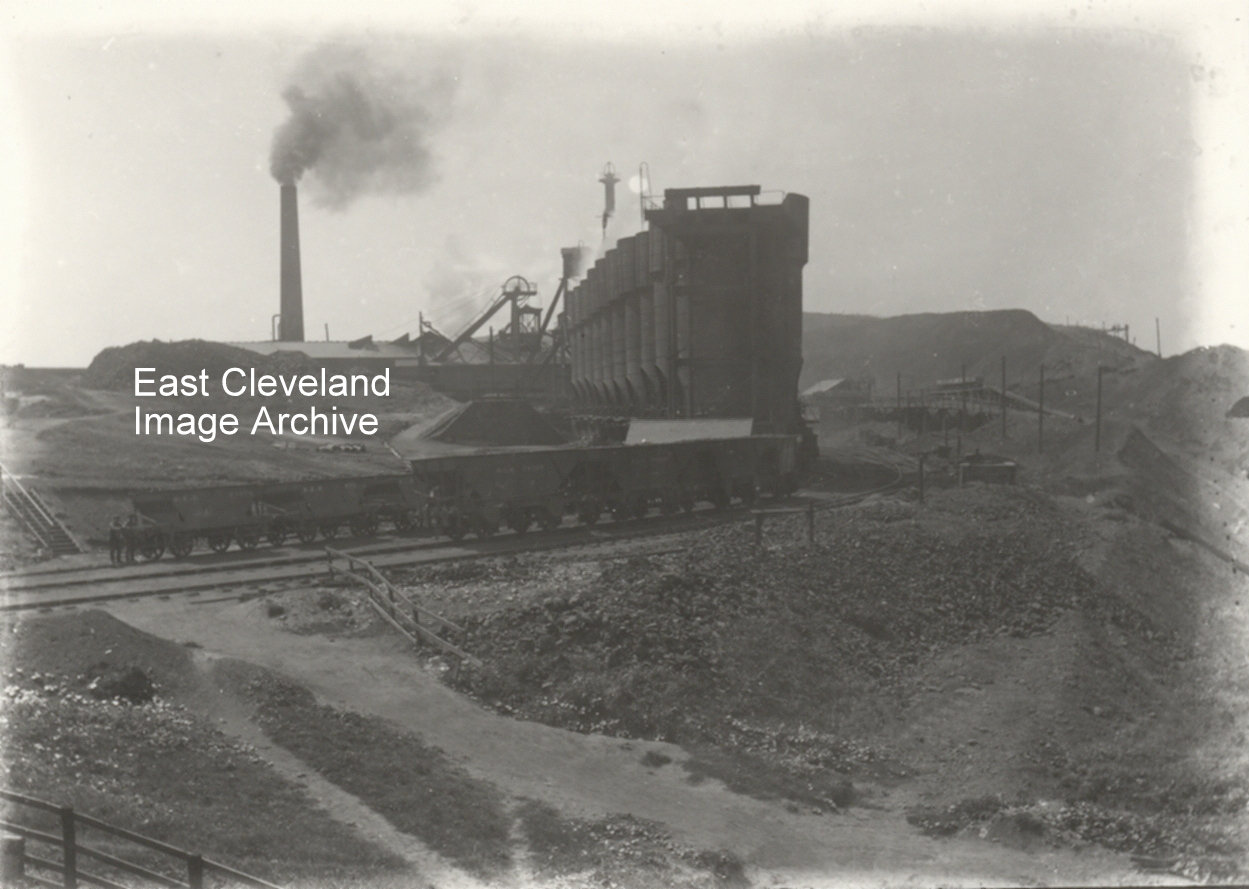
This is a view of the Calcining Kilns at Liverton Mines – which were well-known as being associated with the Ironstone Mine – these Kilns obviously dominated the landscape. Simon Chapman advises: “Railway wagons at this time were generally wooden bodies but couldn’t be used for carrying hot calcined ore which is why the N.E.R. built a fleet of steel wagons specifically for this traffic; a few can be seen to the left. In front are more steel wagons, built about 1906 to hold a greater tonnage”. Russ Pigott asked ”Were the larger steel wagons in the picture fitted with vacuum brakes? There seems to be a vac cylinder mounted above the sole bar on the end of the wagon. This would seem a bit strange as not many locomotives used on these trains were fitted for vacuum at the time”. Answered for us by Simon Chapman: ” Well spotted, Russ! Apparently they were actually fitted with air brakes and run as block trains from Liverton to Cargo Fleet works. This was such an unusual working that I can remember the late Ken Hoole trying to find out more information over 30 years ago. Note the large drum shape above each axle box on these larger wagons – some form of friction reducing roller which can’t have been very successful otherwise it would have become more common.” Russ said ”I thought the drum shape was the operating wheel for the hopper doors. What locomotives were used on these trains, I think most J21s were Westinghouse fitted but the J26s and 27s had no train brakes. That poor remaining J21 sits a mere couple of miles from me looking ever more like a Barry engine!”
Thanks to Russ Pigott for the updates and many thanks to Simon Chapman whose information is invaluable to all who visit the site; Simon also thought it was: “A very atmospheric picture!”.
Simon Chapman is wrong in stating the larger wagons were air braked and Russ Pigott was correct in his assumption that what he spotted was a vacuum cylinder. The large wagons are 30 tonners to Diagram S3, introduced in 1905. As to locos to work vacuum fitted trains, a list of locos published by the N.E.R. in 1907, shows a total of 30 goods locos fitted to work vacuum trains, comprising of 0-6-0s :- 7 class 398, 1 class 59, 1 cass C, 13 class C1, 6 class P1, and 0-8-0s, 2 class T.